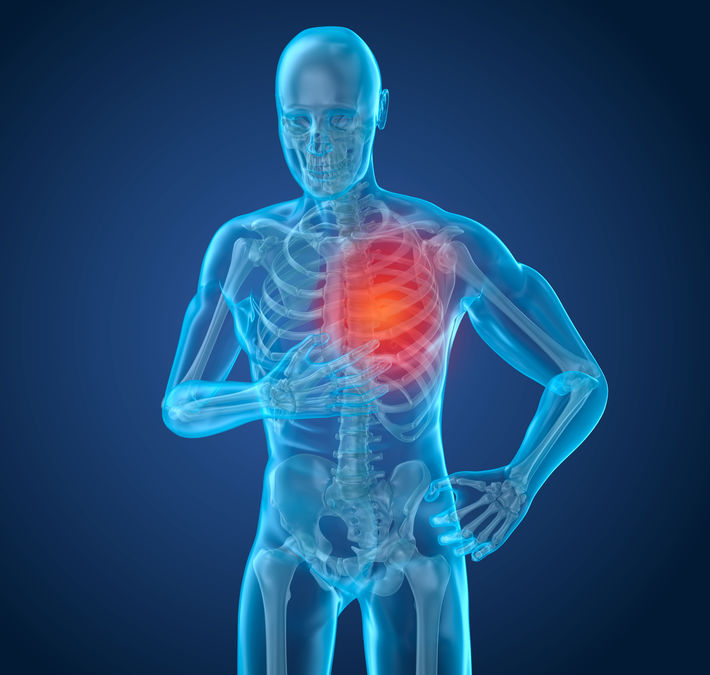
Mr. Sigmund
History:
- 45 years old
- No history of Chronic Disease or past cardiac problems
- Tobacco smoker for 30 years, 1 pack per day
- Cocaine use “many years ago”
- Denies over-exertion like vigorous exercise or playing basketball on the yard
- Incarcerated 6 months
- Worked as a laborer on the street
Symptoms:
- Started this afternoon
- Feeling pressure on chest
- Anxious – other guys told him he was having a heart attack
- Unable to identify one area of pain
- Began when he was working in the kitchen washing pans from lunch
- Thinks the pain is also in his left arm, but intermittent
- Positive for nausea and sweating
- After resting a bit, symptoms went away
- Concerned because this was the second episode today
- On arrival to Medical, pain-free
Mr. Johnson
History:
- 45 years old
- Chronic Disease: Hypertension, controlled with lisinopril 20 mg daily
- Tobacco smoker 30 years, 1/2 pack per day
- Daily marijuana use on the street
- Denies over-exertion like vigorous exercise or playing basketball on the yard
- Incarcerated 4 months
- Worked as a plumber in the street
Symptoms:
- Sharp, focused pain on left chest
- Worse with sitting upright, eases when laying on bunk
- Constant regardless of position
- Pain reproduced and worse with palpation to left chest area
- No radiation of pain, although he states his shoulders hurt as well
- No sweating
- Pain is still there on arrival to Medical
- Upon further questioning, patient states that he was helping to lay pipe this week at the new jail wing by holding the pipe in the air until it could be connected to the existing system
What Do You Do Next?
Obtain Vital signs
Mr. Sigmund’s – Blood Pressure 150/82; Pulse 110 beats per minute; Temperature 98.6; Respirations 16 breaths per minute; Oxygen Saturation 98% on room air
Mr. Johnson’s – Blood Pressure 150/96; Pulse 98 beats per minute; Temperature 98.6; Respirations 18 breaths per minute; Oxygen Saturation 97% on room air
Physical Evaluation
While other staff are retrieving the EKG machine, you conduct a brief physical evaluation of your patient.
Mr. Sigmund – Alert and oriented x 4; Gait steady; Skin clammy, pale, capillary refill 2 seconds; Lungs clear to auscultation; Pain free at this time, with no change of pain with deep inspiration/expiration; Heart S1, S2 and regular; Abdomen soft, non-tender to palpation with normal bowel sounds.
Mr. Johnson – Alert and oriented x 4; Gait steady; skin warm and dry, capillary refill 2 seconds; Chest unremarkable, lungs clear to auscultation, although initially Mr. Johnson did not make a good respiratory effort due to the pain and had to be encouraged to breath deeply; Pain worsens with deep inspiration and expiration, Pain reproducible/worse with palpation to left chest area; Heart S1, S2 and regular; Abdomen soft, non-tender to palpation with normal bowel sounds.
Obtain EKG
Mr. Sigmund’s EKG – elevated t waves; tachycardia; possible MI
Mr. Johson’s EKG – Normal Sinus Rhythm
What Do You Do Next
Mr. Sigmund: [Based upon your facility protocol for Cardiac Chest Pain*] Apply oxygen via nasal cannula at 4 liters per minute; administer baby aspirin (or 1 325 mg aspirin based upon your facility’s protocol for cardiac chest pain); arrange for transport 911 and call the Provider. Keep the patient calm.
Mr. Johnson: Contact Provider and administer ordered Naproxen 375 mg i now and then BID for 5 days*. Add to Nursing Sick Call list for appointment in 3 days to check status. Patient education regarding naproxen and potential for GI upset/bleed, and to report any worsening of condition. Inform patient of appointment already set for three days to check on condition.
* Why did we not follow our Nursing Assessment Guidelines regarding non-cardiac chest pain and administer ibuprofen 200 mg BID or acetaminophen 325 mg ii BID? Read our post on Ibuprofen and NSAIDs: Risks and Benefits – Ibuprofen will increase blood pressure and decrease the efficacy of lisinopril. It may also adversely affect kidneys when administered with ACE Inhibitors. Acetaminophen may be okay to use, but is not as effective for the costochondritis that Mr. Johnson has developed.
As a reminder, NEVER assume that a patient is experiencing cardiac or non-cardiac chest pain based upon his/her/their age, gender, or ethnicity. Gather your facts, which include patient history and a review the health record, and conduct an objective evaluation that should always include, at a minimum, vital signs, lung, heart/chest, and abdominal assessment, and contact your Provider. If you have the ability to obtain an EKG, do so. Follow the protocols or Nursing Assessment Guidelines approved for your facility.
We can all learn from each other. Please share your experiences evaluating and caring for patients who present with chest pain in the comments section below!
Leave a Reply